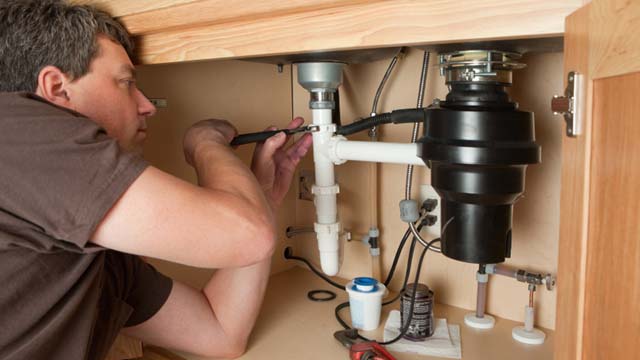Just about every person has their own idea about Why Is My Garbage Disposal Leaking From the Bottom?.

Waste disposal unit are crucial kitchen area home appliances that assist in dealing with food waste efficiently. However, a leaking garbage disposal can be a discouraging and messy issue to take care of. Luckily, several leaks can be taken care of conveniently with a couple of straightforward steps. In this short article, we will review exactly how to take care of a dripping waste disposal unit effectively.
Introduction
Waste disposal unit are set up under kitchen sinks and are made to shred food waste right into smaller sized items, enabling it to pass through the plumbing system easily. While these tools are usually reliable, leaks can happen over time as a result of deterioration, loosened links, or damages to the system.
Usual Root Causes Of Leakages in Waste Disposals
Worn Seals and Gaskets
Seals and gaskets play a crucial function in preventing water from dripping out of the waste disposal unit. Gradually, these components can degrade, leading to leaks around the disposal system.
Loose Connections
The connections in between the waste disposal unit and the pipes system can come to be loose over time, triggering water to leakage out during procedure.
Splits or Openings in the Disposal Unit
Physical damage to the waste disposal unit, such as splits or openings in the housing, can also lead to leaks.
Identifying the Resource of the Leak
Prior to attempting to deal with a leaking garbage disposal, it is essential to recognize the source of the leakage. This can commonly be done through aesthetic inspection or by conducting basic examinations.
Visual Assessment
Check the waste disposal unit unit carefully for any type of signs of water leak. Pay close attention to locations around seals, gaskets, and link factors.
Examining for Leaks
One means to evaluate for leakages is by running water via the disposal system and checking for any kind of noticeable indicators of leakage.
Devices and Products Needed for Repairing a Leaking Garbage Disposal
Prior to beginning the repair process, gather the essential devices and products, consisting of a screwdriver, adjustable wrench, plumbing professional's putty, replacement seals or gaskets, and epoxy or patching material for repairing cracks or holes.
Step-by-Step Overview to Dealing With a Leaking Garbage Disposal
Switch off the Power
Before attempting any kind of repair services, make certain that the power to the garbage disposal device is shut off to prevent the danger of electrical shock.
Find the Leakage
Determine the specific area of the leak and establish the reason.
Tighten up Connections
Make use of a wrench to tighten any type of loose links between the disposal unit and the plumbing system.
Replace Seals or Gaskets
If the leak is because of worn seals or gaskets, get rid of the old parts and replace them with brand-new ones.
Patching Splits or Openings
For splits or openings in the disposal unit, use epoxy or a suitable patching product to secure the damaged area.
Examining the Waste Disposal Unit After Repair
Once the fixing is full, evaluate the garbage disposal by running water through it to make certain that the leakage has been resolved.
Preventive Upkeep Tips to Avoid Future Leakages
To prevent future leakages, it is vital to do regular upkeep on your garbage disposal. This includes keeping it clean, staying clear of putting non-food items or difficult objects down the disposal, and regularly looking for leakages or various other concerns.
Conclusion
To conclude, fixing a dripping garbage disposal is a relatively straightforward process that can be finished with standard devices and materials. By following the actions outlined in this article and exercising precautionary maintenance, you can maintain your garbage disposal in good working problem and avoid costly repairs in the future.
HERE’S HOW TO FIX YOUR GARBAGE DISPOSAL
WHAT TO DO IF SOMETHING IS STUCK IN YOUR GARBAGE DISPOSAL
If the impeller won’t turn, there’s probably something stuck in the disposal. It could be a steak bone or peach pit, although plumbers report pulling all sorts of inappropriate objects out of disposals, such as bottle caps or aluminum foil. Make sure power to the disposal is off, and look inside to see if you can see the source of the jam.
Never stick your fingers in a disposal. Pull out anything you see with tongs or pliers.
If the disposal still won’t work, it may be time to call a plumber or consider buying a new disposal. GEM Plumbing & Heating is here for all of your garbage disposal needs.
WHAT TO DO IF YOUR GARBAGE DISPOSAL DRAIN IS CLOGGED
Take everything out from underneath your sink and put a bucket or other container under your disposal to catch any water that drains out. Disconnect your disposal from the power supply. If it’s plugged into a wall outlet, unplug it. If it’s hardwired into an electrical box, go to the electrical panel and turn off the breaker for the disposal. Pour ¼ cup of baking soda into the drain, followed by ½ cup of white vinegar. Give the solution a few minutes to fizz and do its work. Look into the disposal with a flashlight to see if you can see an object that might be causing the clog. If you see it, remove it using tongs or pliers. MORE TIPS ON DEALING WITH A CLOGGED GARBAGE DISPOSAL
Never use drain cleaner in a garbage disposal. It can damage the plastic parts inside the disposal. You can also be splashed with the caustic liquid while working to clear the clog. Beware! Never stick your fingers into a garbage disposal. Trust us — not a good idea. In many instances, your dishwasher drains through your garbage disposal. This allows the disposal to grind any large food particles that may be drained out of your dishwasher. There are some jurisdictions, however, where the plumbing code prohibits such a connection. WHAT TO DO WHEN YOUR DISHWASHER DRAINS THROUGH THE DISPOSAL
Run some water in the sink so your plunger has at least a ½-inch of water to create a seal and plunge vigorously up and down several times. You may need to repeat this several times. Run hot water down the drain to clear any residue that remains.

I discovered that page about Why Is while doing a search on the web. Loved our blog? Please share it. Help somebody else check it out. Thanks a bunch for your time. Please come visit our site back soon.
Click On This Link